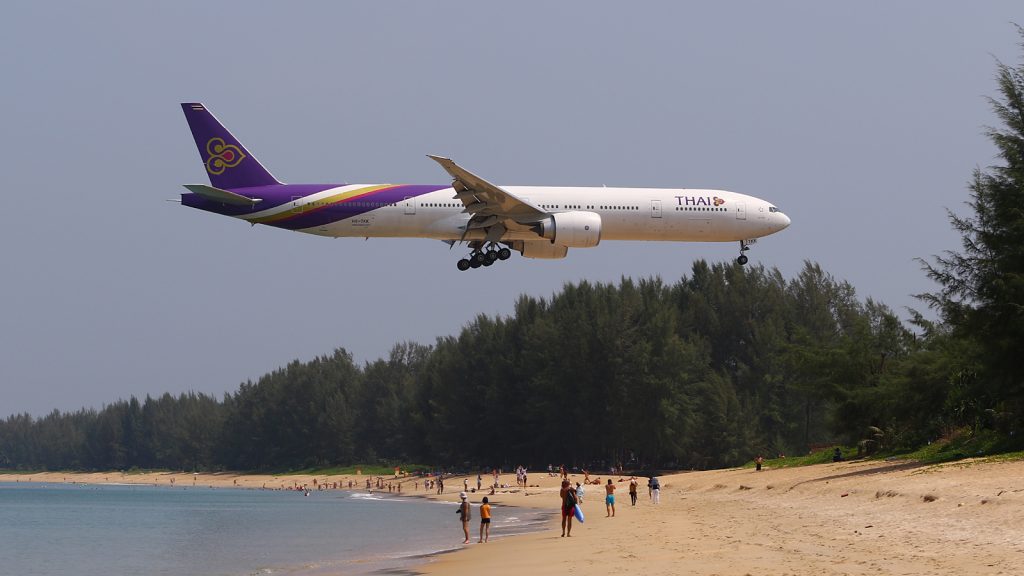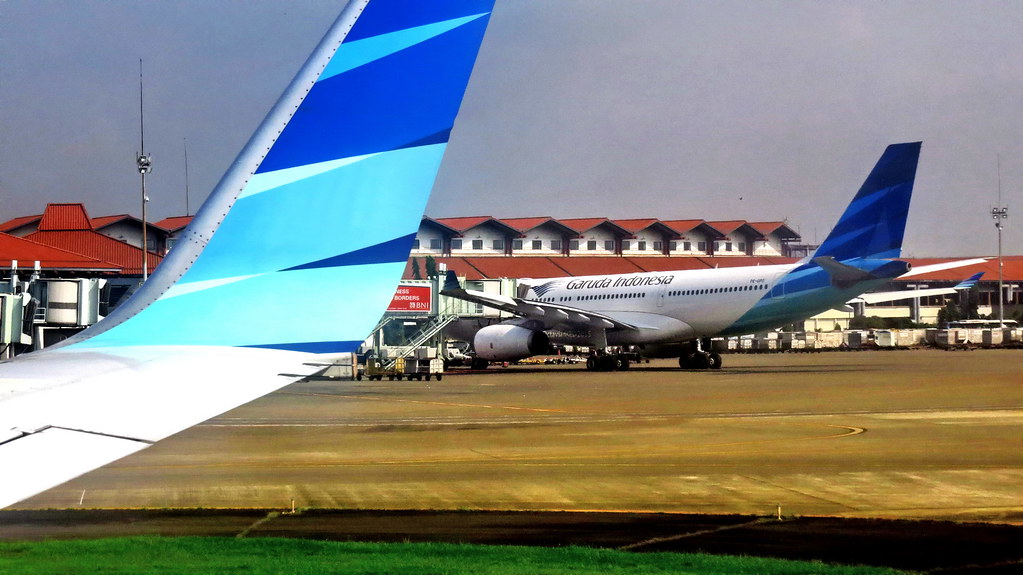Thinking of heading to Southeast Asia for some plane spotting this year?
These are the airports that we think are the most interesting for spotters, and offer great value in terms of numbers of aircraft, types of aircraft, or rarity of aircraft.
Hong Kong Chek Lap Kok

Cathay Pacific Cargo at Hong Kong. Photo (c) Erik Ritterbach
The major airport serving Hong Kong is set on a man-made island to the west of the country. Despite the challenges of Covid, it is still a huge hub and home to airlines like Cathay Pacific.
One of the big draws of Hong Kong is the amount of cargo traffic it handles. Regular big jet freighters pass through from all over the world, and there are some good opportunities for spotting around the perimeter, and from the Sky Deck (when it’s open!).
Bangkok Suvarnabhumi

Z3144228, CC BY-SA 4.0 <https://creativecommons.org/licenses/by-sa/4.0>, via Wikimedia Commons
This main airport serving Bangkok in Thailand replaced the older Don Mueang in the early 2000s (however this airport is now busy again).
It is home to Thai Airways International and a meeting place of the world’s airlines.
The airport has a large terminal between the parallel runways, which spreads out in various directions, and a new satellite terminal for domestic flights; another parallel runway is planned.
Other areas of note at Suvarnabhumi include the maintenance base for Thai Airways, and a large freight facility, both north of the main terminal and visible from aircraft when arriving or departing.
Inside the terminal is an area set aside for watching aircraft, which is signposted. The views are good over the western side of the airport, and photography is possible with a long lens. Having nearby eateries and coffee shop also makes this a comfortable place to watch aircraft. You will not see the whole apron, but most movements will be visible at some point.
Phuket

Thai Airways at Phuket. Photo (c) Erik Ritterbach
Phuket is one of Thailand’s busiest airports thanks to the island’s thriving holiday resorts. Traffic comes from Europe, the Middle East, Australia and the Far East, as well as from across Thailand. It is a mix of scheduled, low-cost and charters, with many wide body aircraft visiting. The busiest season is between November and March.
Nai Yang Beach is one of the most popular places to spot from. Photographers love the proximity to aircraft landing and the stunning location. It is only good if aircraft are landing on runway 09, however.
Singapore Changi

Aero Icarus from Zürich, Switzerland [CC BY-SA 2.0 (https://creativecommons.org/licenses/by-sa/2.0)]
Singapore’s Changi Airport is one of the world’s largest aviation hubs, and a major transit point for travellers heading between Europe and Asia. It is home to Singapore Airlines and its cargo division, plus its Scoot and Silk Way low-cost offshoots. The airport is never quiet and offers a really interesting mix for the enthusiast, with many smaller regional Asian carriers coming and going regularly among the big international traffic.
There are ‘viewing malls’ in terminals 1, 2 and 3, each of which offer slightly different views of different parts of the airport.
There’s also the amazing Crowne Plaza hotel, which has rooms overlooking the action.
Manila
Not as busy as some of the other Asian hubs, Manila is still a really interesting airport to visit with a good mix of traffic – a lot of which isn’t seen elsewhere.
There are some good spots for viewing at the end of runway 06 if you have a car. Alternatively there’s a walkway signposted ‘Airport Runway’ on the 4th floor of Terminal 3, near the food court. There are no seats, but you can use the windows for a quick view of anything outside.
Jakarta
Jakarta’s main airport is the busiest in the country and has three terminals, with the two main ones having viewing galleries. It is the home base of Garuda Indonesia, Batik Air, Indonesia AirAsia and Lion Air.
The airport layout sees a pair of parallel runways, with the original Terminal 1 facing the southern runway, Terminal 2 facing the northern runway, and the brand-new Terminal 3 also facing this direction. The latter handles most of Garuda’s flights, and it is anticipated that Terminal 4 will also be built in the future.
Jakarta was somewhere enthusiasts flocked to see older classic jet and prop types, but these days are now gone save for some aircraft languishing in long term storage near the maintenance areas on the western portion of the airport.
There are a couple of good spotting hotels here, including one inside Terminal 2. You can travel freely between the three terminals using the monorail.
Kuala Lumpur International

A large hub airport known to most as KLIA. It is one of Asia’s busiest airports, and was opened in 1998, replacing the cramped Subang Airport close to the centre of the city.
It is the home base of Malaysia Airlines, AirAsia and AirAsia X and on the route network of many cargo airlines, as well as carriers from around the world.
The airport is split into two sections – KLIA1, which is the original complex, and KLIA2, which opened for low-cost operators in May 2014. Both main terminal buildings have official viewing galleries inside (signposted). KLIA1 has a satellite building, which doesn’t have any spotting areas, although it is possible to view from certain gates. You can travel between the two areas using a train, which costs less than £1/$1.
KLIA has three runways and a large cargo complex.
Denpasar Bali
Denpasar Ngurah Rai International is the third busiest airport in Indonesia, and a busy tourist resort – particularly among Asians an Australians. The airport sees a good mix of exotic domestic aircraft and large international carriers on a daily basis.
The airport spans a narrow strip of land between the ocean and an inlet to the east. It has a single runway, 09/27, which extends into the sea on reclaimed land.
Much of the northern side of the runway is taken up by the airliner parking stands and passenger terminal, while the south side has a smaller ramp for executive aircraft. On the departures level of the terminal, a narrow corridor can be found which has large windows overlooking the apron and runway. Photography is not ideal due to the glass, but it is the only worthwhile spot inside the building.
World Airports Spotting Guides
Discover more amazing places to spot aircraft at hundreds of airports around the world in our popular guidebook – World Airports Spotting Guides.
With descriptions, maps, spotting hotels, museums and more, it covers all the essential information you need to go spotting!
Get Your Copy








